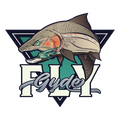FLY GYDE STRONGLY RECOMMENDS THAT YOU ENROLL WITH GLOBAL RESCUE PRIOR TO EMBARKING ON YOUR TRIP.
Medical and security emergencies happen. When they do, we rely on Global Rescue, the world's leading membership organization providing integrated medical, security, travel risk and crisis response services to our travelers worldwide. They offer both memberships as well as Travel Insurance, with a "cancel for any reason" option.
Memberships:
With a Global Rescue membership, an emergency evacuation could cost you more than $100,000. That's why over 1 million members trust Global Rescue to get them home when the worst happens.
IMG SIGNATURE TRAVEL INSURANCE
IMG®, a worldwide leader in global benefits and travel insurance, has created the industry's most complete product, tailor-made for the adventurous traveler. IMG Signature Travel Insurance can be purchased individually or as an add-on to your Global Rescue membership. This provides coverage against a variety of unexpected expenses, including a "cancel for any reason" option, while you're traveling, giving you the added comfort of knowing the actual value of your trip is protected if something goes wrong.
Don't travel without Global Rescue.





























































